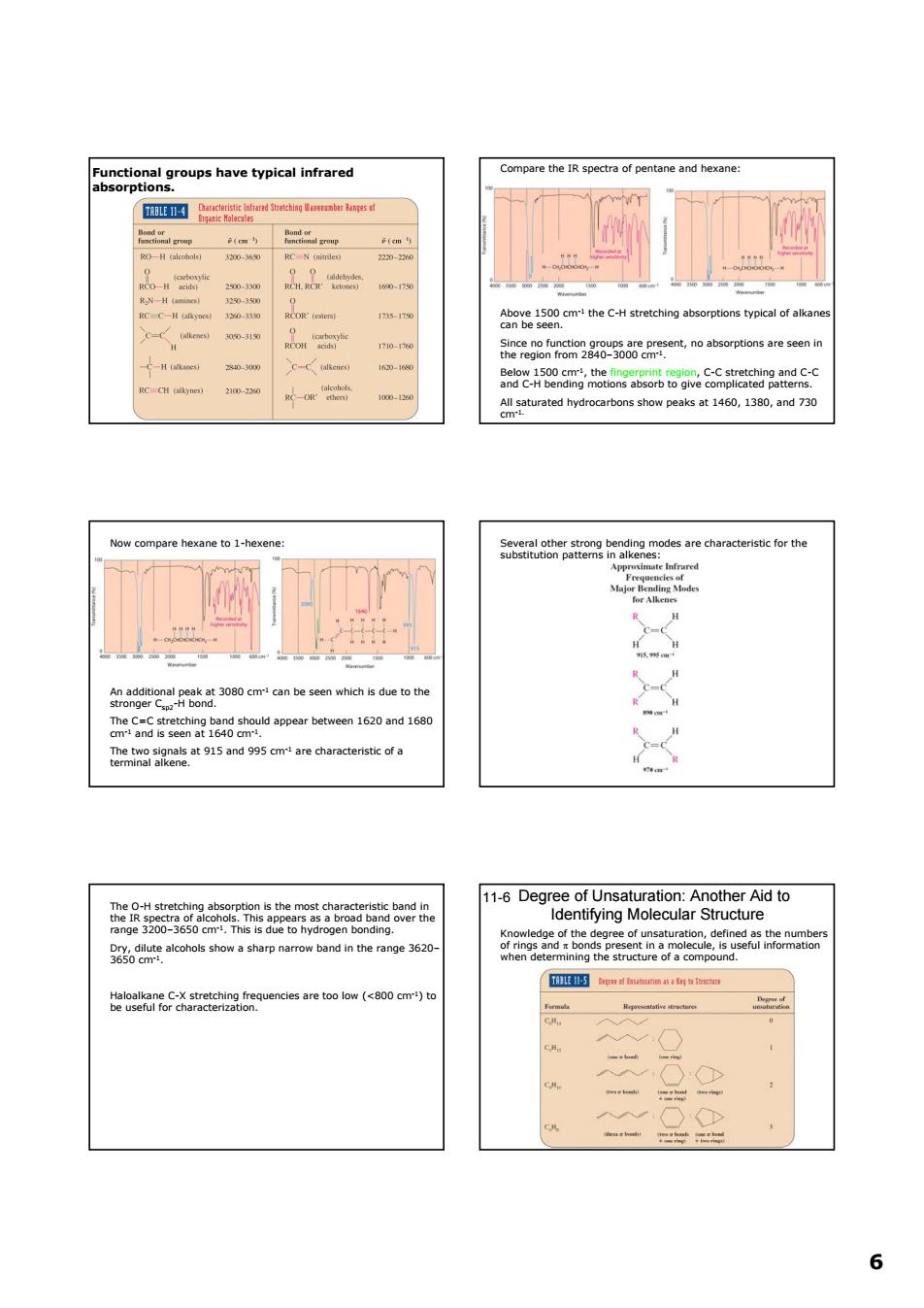正在加载图片...

typical infrared e the IR spectra of penta mn sr 0mtheCsrettypcfk eghtm288-g%.m5entnoabsoptonsarnesenn c-c 8sgcH58endmgoeoes3bsobogne8eChecagganacd w-tx Amaturatadydoartonsshcwpeasat1460.1380,a70 w compare hexane to 1-h me,SnGhagadaapearbetwen1620and16oo 1-Degnto e362 59e6 66 Functional groups have typical infrared absorptions. Compare the IR spectra of pentane and hexane: Above 1500 cm-1 the C-H stretching absorptions typical of alkanes can be seen. Since no function groups are present, no absorptions are seen in the region from 2840–3000 cm-1. Below 1500 cm-1, the fingerprint region, C-C stretching and C-C and C-H bending motions absorb to give complicated patterns. All saturated hydrocarbons show peaks at 1460, 1380, and 730 cm-1. Now compare hexane to 1-hexene: An additional peak at 3080 cm-1 can be seen which is due to the stronger Csp2-H bond. The C=C stretching band should appear between 1620 and 1680 cm-1 and is seen at 1640 cm-1. The two signals at 915 and 995 cm-1 are characteristic of a terminal alkene. Several other strong bending modes are characteristic for the substitution patterns in alkenes: The O-H stretching absorption is the most characteristic band in the IR spectra of alcohols. This appears as a broad band over the range 3200–3650 cm-1. This is due to hydrogen bonding. Dry, dilute alcohols show a sharp narrow band in the range 3620– 3650 cm-1. Haloalkane C-X stretching frequencies are too low (<800 cm-1) to be useful for characterization. Degree of Unsaturation: Another Aid to Identifying Molecular Structure 11-6 Knowledge of the degree of unsaturation, defined as the numbers of rings and π bonds present in a molecule, is useful information when determining the structure of a compound